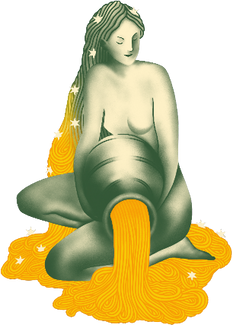Dip your biscotti in Vin Santo for a true Italian experience.
We’ll get this out of the way first: The cookies that we in the U.S. know as biscotti are actually called cantucci—biscotti is the catch-all Italian word for cookies of any kind! Twice-baked and sliced into flat, oval lengths, cantucci can be traced back to the city of Prato in Tuscany in the middle of the 19th century. They were invented by baker Antonio Mattei, and they quickly became a favorite throughout Italy and across Europe. But it wasn’t until the 1970s that they became known in the U.S. outside of Italian American communities. In fact, after the New York Times ran a recipe for “hazelnut biscotti” in 1978, readers wrote in to complain that “the cookies were hard as rocks,” wondering if the recipe had been misprinted! As legendary food writer Craig Claiborne pointed out, “That is as it should be…. I like that firm, dry texture.”
Those readers weren’t wrong that cantucci can be a bit hard to eat on their own. That’s why in Italy, the crunchy are almost always dipped in a sweet wine called vin santo. Like cantucci, vin santo has its origins in Tuscany. It’s usually made with trebbiano and malvasia grapes, and the slightly syrupy, amber-hued wine can have flavors of honey, hazelnut, and dried apricot. Because of its intensity, vin santo is usually served in smaller pours of 3 ounces or less—the perfect amount for an after-dinner sip. A traditional vin santo glass flares out around the top like a bell, to help funnel all those gorgeous aromas toward the nose as you drink.

Made from grapes that are left to dry after harvest to concentrate their sugars, vin santo (“holy wine”) was likely so called for its use in the Catholic mass service, where a sweeter wine is generally preferred. One story of its origin, in fact, claims that it was invented by Tuscan monks in the centuries after the fall of the Roman empire. It’s sometimes called a straw wine, because the grapes are dried on straw mats that encourage ventilation.
After drying for several months, the grapes are pressed and the juice is transferred to small barrels called caratelli to age and ferment naturally for a minimum of three years. Unlike other wines, which are aged in underground cellars or temperature-controlled storehouses to protect them from the seasons, changes in temperature are part of the magic for vin santo. The caratelli are kept in open lofts that exposes them to summer’s heat and winter’s chill, speeding up the natural evaporation and oxidation that creates those complex flavors in the wine.
The nutty oxidized flavors in vin santo are a perfect match for cantucci’s mild sweetness. Traditionally, cantucci are studded with almonds—though these days they can be found with a universe of tasty add-ins, from dried fruit to chocolate chips. The good news is that all of those flavors pair beautifully with vin santo. For a perfectly Italian after-dinner moment, look for a DOC-certified vin santo from Tuscany, such as Vin Santo del Chianti or Vin Santo de Montepulciano, and go ahead and dip your cantucci!















0 comments